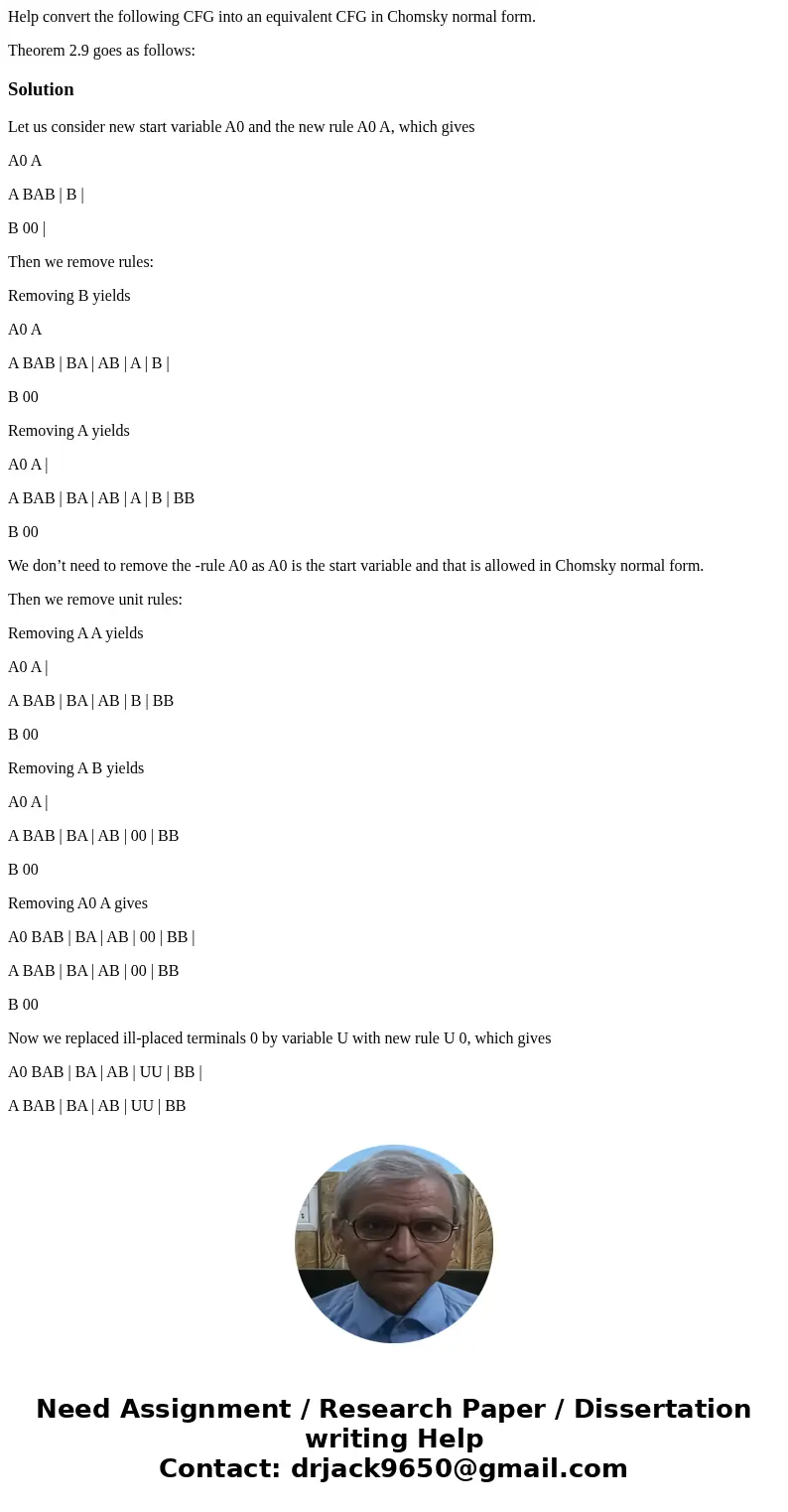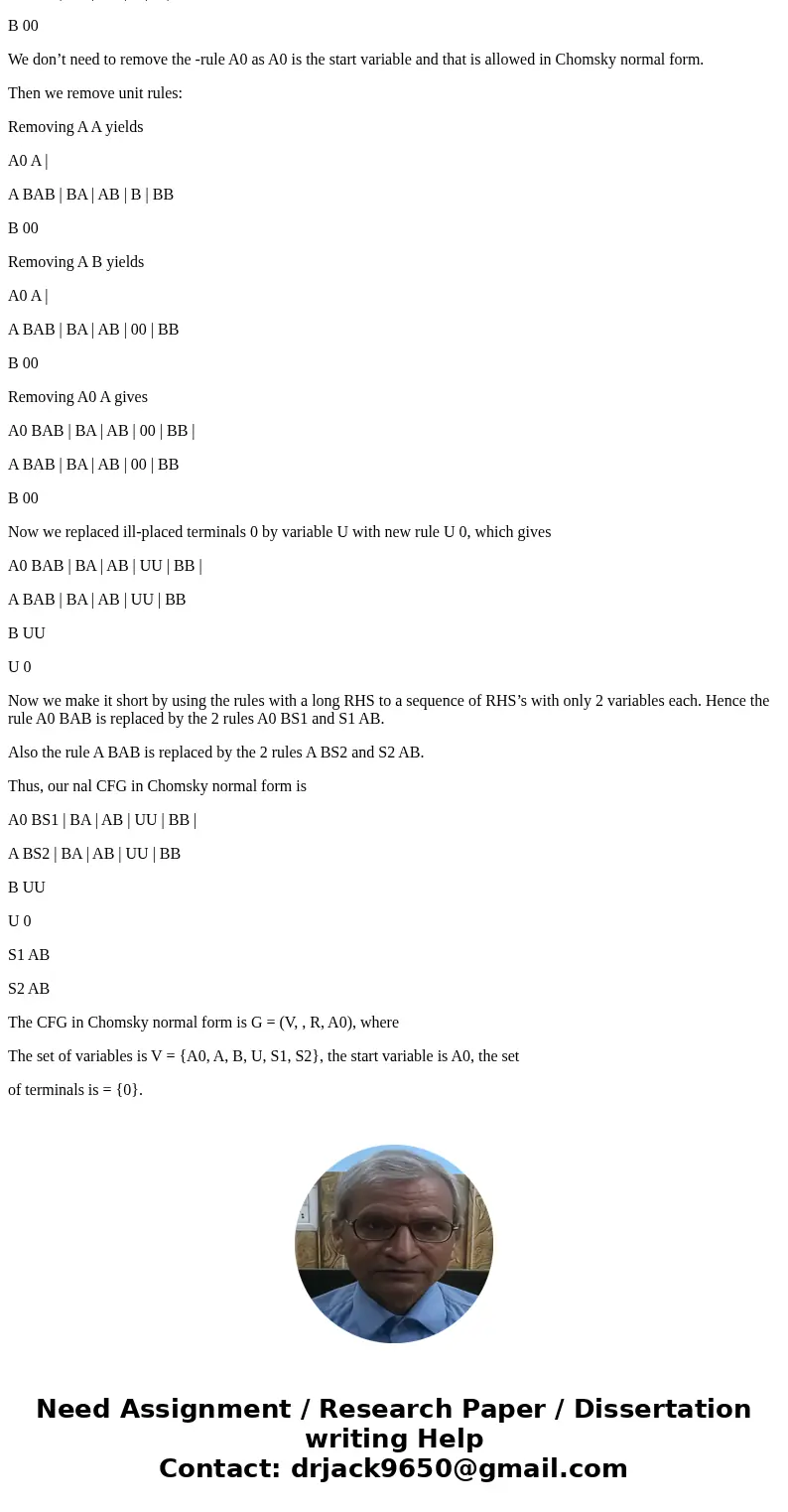Help convert the following CFG into an equivalent CFG in Cho
Help convert the following CFG into an equivalent CFG in Chomsky normal form.
Theorem 2.9 goes as follows:
Solution
Let us consider new start variable A0 and the new rule A0 A, which gives
A0 A
A BAB | B |
B 00 |
Then we remove rules:
Removing B yields
A0 A
A BAB | BA | AB | A | B |
B 00
Removing A yields
A0 A |
A BAB | BA | AB | A | B | BB
B 00
We don’t need to remove the -rule A0 as A0 is the start variable and that is allowed in Chomsky normal form.
Then we remove unit rules:
Removing A A yields
A0 A |
A BAB | BA | AB | B | BB
B 00
Removing A B yields
A0 A |
A BAB | BA | AB | 00 | BB
B 00
Removing A0 A gives
A0 BAB | BA | AB | 00 | BB |
A BAB | BA | AB | 00 | BB
B 00
Now we replaced ill-placed terminals 0 by variable U with new rule U 0, which gives
A0 BAB | BA | AB | UU | BB |
A BAB | BA | AB | UU | BB
B UU
U 0
Now we make it short by using the rules with a long RHS to a sequence of RHS’s with only 2 variables each. Hence the rule A0 BAB is replaced by the 2 rules A0 BS1 and S1 AB.
Also the rule A BAB is replaced by the 2 rules A BS2 and S2 AB.
Thus, our nal CFG in Chomsky normal form is
A0 BS1 | BA | AB | UU | BB |
A BS2 | BA | AB | UU | BB
B UU
U 0
S1 AB
S2 AB
The CFG in Chomsky normal form is G = (V, , R, A0), where
The set of variables is V = {A0, A, B, U, S1, S2}, the start variable is A0, the set
of terminals is = {0}.


 Homework Sourse
Homework Sourse